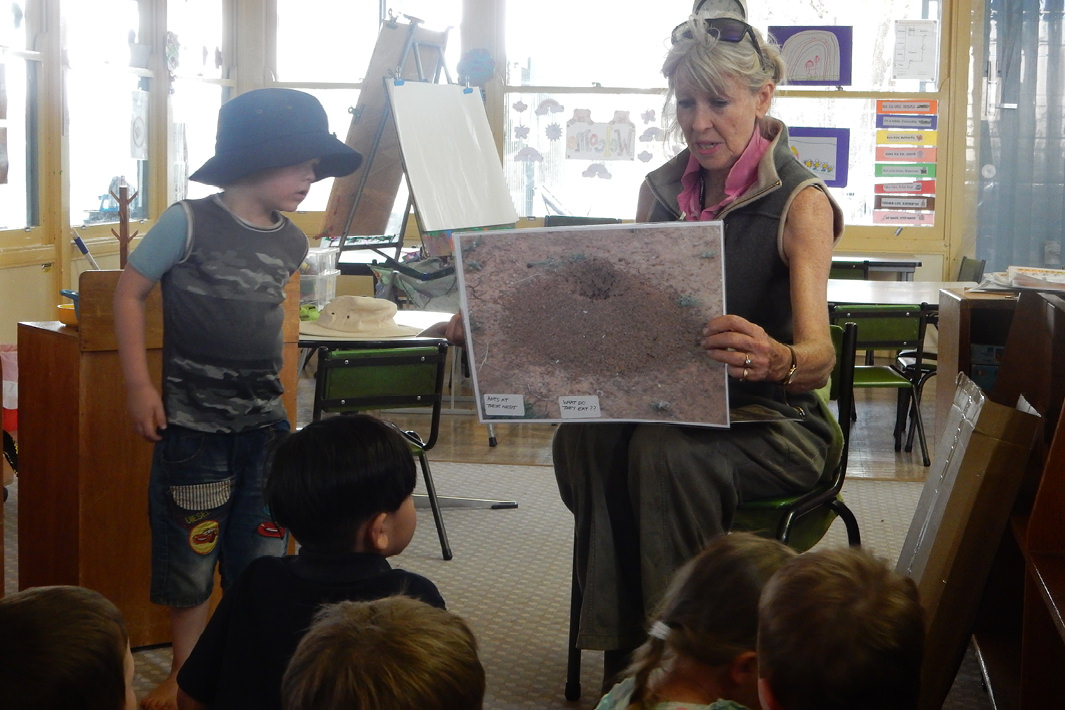CASE STUDY

Age Groups: 0-7
Grant Name:
School: Pyramid Hill Preschool
Grant Sponsor: Department of Energy, Environment and Climate Action
Project Overview:
Pyramid Hill Preschool, located south of the Murray River, set out to revegetate a fenced-in area at the rear of the school building. It had only a few trees, some native groundcovers (Creeping Salt Bush and Ruby Saltbush) plus some exotic weeds. On-ground activities involved weeding, mulching and follow up planting of native plant species. The children were involved with all activities including the maintenance watering of the new plantings.
This creation of habitat, through planting, was also bolstered with the installation of nest boxes to encourage local fauna to the area.
The Victorian Junior Landcare and Biodiversity Grant of $1,932 enabled them to implement their project successfully.
Environmental Outcomes
Before undertaking the project, the preschool grounds only had a few Gold Dust Wattles, Creeping and Ruby Saltbush plants and a few native grasses. The area now has an increase in the number and variety of local species that has enhanced the biodiversity value of the site. For example, the Creeping Saltbush and Ruby Saltbush ground coverage has notably increased in size. This will attract more spiders, ants and lizards who will use these two species for food.
A bonus was that the school had plants appear near where they had originally planted and teachers were unsure if these were weeds or not, as they were too young to identify. The school was advised to leave them and to their delight, these plants turned out to be Golden Everlasting Daisies that had self-seeded and then flowered. These will set seed and germinate thus increasing biodiversity even more within the preschool grounds.
Educational Outcomes
The project has become an extension of the classroom with the children engaging in planting and watering of the plants. The children now have a greater understanding of the importance of looking after plants in their school grounds. More than 30 children participated in the project.
They have watched the plants grow and flower and observed different insects, birds and lizards coming into the school grounds. They regularly check the bird boxes with the teacher and understand how important it is to provide habitat for the local fauna. They are learning about the value and importance of native vegetation.
The enhancement of the backyard enabled this area to become an important learning space for the children to enjoy and observe
Community and Social Outcomes
Jenny Spence from Victoria’s Department of Jobs, Precincts and Regions (DJPR) and a member of the local Landcare Group, kindly volunteered her time and expertise to run an educational session and assist with the preparation, selection and planting of the native vegetation.
The project increased the preschool’s interaction with the local community. On the planting day, community members assisted the preschool children. A separate mulching morning was combined with a general working bee and the school provided a BBQ lunch for all the workers and their families. This proved to be a great opportunity for families to socialise, especially since many the attendees were from farming backgrounds and were doing it a bit tough due to dry seasonal conditions.
Some of the families had moved to the area from the Philippines so it was also a valuable opportunity for them to meet other local families. Those participating at the working bees talked about the project and the importance of protecting and enhancing our environment, to promote the local flora and fauna and to create an interest in the biodiversity in our local area.
A total of 62 community volunteers were involved with the project.
What have you learnt?
You cannot control the weather! A 100 percent success rate is difficult to achieve when planting natives. Plan, prepare and seek expert assistance where possible.
Conclusion
As of December 2019, the project has been completed about a year and according to the preschool, some of the shrubs have grown taller than the preschool children and other plants have self-seeded and are flowering. The hope is that for many years to come, children attending Pyramid Hill Preschool will learn from and enjoy this special space.
"The area which you have created is a real credit to the preschool community, you should be very proud of it, it's such a great transformation," commented Jenny Spence (DJPR/local Landcare member/volunteer assisting with the project):
 Teachers & Educators
Teachers & Educators Youth or Community Groups
Youth or Community Groups